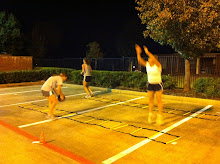MORE MUSCLE = GREATER FAT LOSS
Here’s a fact that you may not be aware of: Every pound of muscle you “own” adds an additional 50 calories to your daily calorie burn. In other words, 10 lbs of lean muscle equates to a real 500+ calorie increase in your metabolic rate.
Here’s another fact: most people lose muscle while dieting. This can be the result of any one (or more) of the following factors:
Inadequate calorie intake – as mentioned in an earlier secret, not eating enough food and calories is the equivalent of metabolic suicide. Not only will it cause an immediate decrease in calories burned per day, but it will also cause your body to begin feeding on muscle tissue for energy (as muscle tissue is less important to survival than calorie-rich body-fat).
Excessive slow-go cardio – not only does regular “slow-go” cardio fail miserably at burning substantial body fat, it also is a great way to eat away at calorie-burning muscle tissue as you try to lose fat.
A lack of resistance training – most people who diet solely rely on cardio for exercise (if they even exercise at all). Unfortunately, cardio alone doesn’t do much to support lean body mass (i.e. lean muscle); for that, you’ll need to start incorporating some resistance training into your exercise regimen.
Inadequate dietary protein – protein should be the staple nutrient in every weight-loss diet, but unfortunately, it’s often comes in last place when compared to carbohydrates and fat. Simply put, if your goal is to have a lean, sexy body that you can be proud of, you need to be eating protein with every meal.
To summarize, muscle tissue supports metabolism, makes fat loss easier, and ultimately leads to the “lean” look you’re after. If you’re worrying about getting “too big”, that isn’t going to happen, especially while losing fat. But if you are careful to avoid the forementioned four mistakes, you’ll make your fat-loss journey much easier and you may just add a few pounds of lean muscle in the process.



















